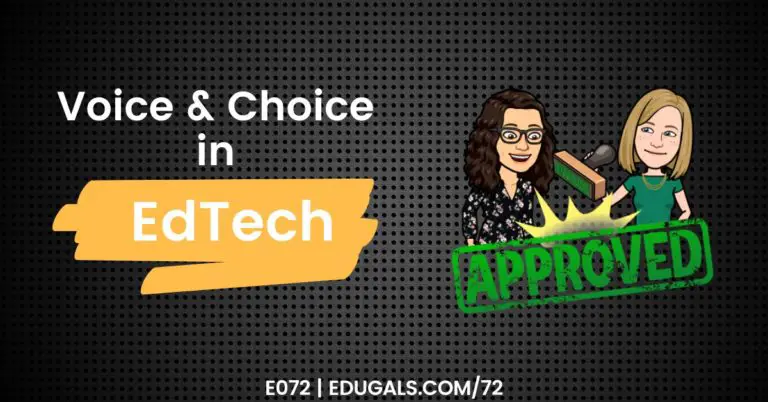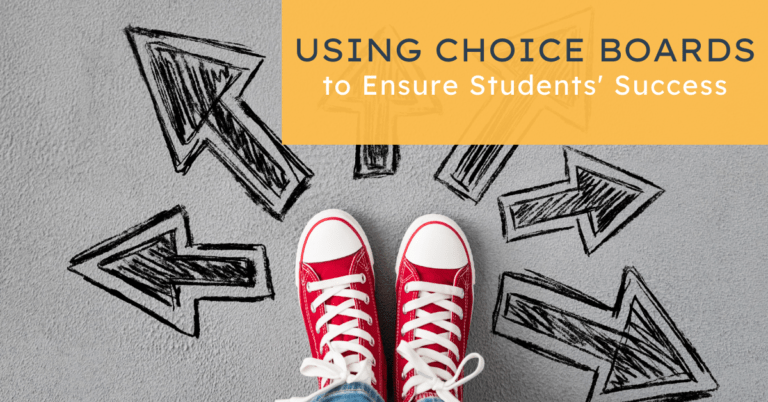When it comes to education, the way we view our students can make a huge difference in their learning experience and success. This is where the concept of asset vs. deficit mindset comes in.
An asset mindset is all about recognizing and using students’ strengths, talents, and unique qualities to create a positive and encouraging learning environment. On the other hand, a deficit mindset focuses on what students lack or struggle with, which can hold them back and hurt their confidence.
In this blog post, we’re going to dive into these two mindsets, talk about why they matter, and share some tips on how we can all adopt a more asset-based approach in our classrooms. Let’s explore how shifting our perspective can help us unlock the full potential of every student we teach. You can also listen to our podcast conversation below on asset vs deficit mindsets.
What Are Asset-Based And Deficit-Based Mindsets In Education?
For those that are new to this topic, here’s a quick definition or description of asset and deficit mindsets:
An asset-based lens is when you are looking at your students and what they bring with them as strengths, embracing these strengths and experiences, and helping them to move forward with high expectations.
A deficit-based lens focuses on students based on what they lack – it is looking at their weaknesses, and not at what they have to offer.
Tips And Strategies For Asset-Based Mindsets
There are so many great things out there that educators do on a daily basis that impact students, and shift towards an asset-based approach. In this next section, we are going to explore some of these strategies, as well as some strategies that maintain more of a deficit-based mindset in education.
1. Use Culturally Relevant And Responsive Pedagogical Approaches
Culturally relevant and responsive pedagogy, aka CRRP, is a big part of how we, as educators, can approach and consider our students from an asset-based lens.
The three main areas of CRRP are:
- High expectations
- Cultural competence
- Critical consciousness
Within these three areas, particularly with respect to cultural competence, this idea of an asset-based approach is explicitly mentioned as a strategy to use and consider in teaching.
This mindset shift is so important. Looking at what students bring to the table, and examining how we can leverage this in our classrooms, versus focusing on the things that students can’t do, makes a huge difference in educators consider and work with students in the classroom.
It is so easy to group students based on perceived faults, and then attribute failures or struggles in a course to these faults. More specifically, it is so easy to label students based on the fact that they may have an IEP or the fact that they are English Language Learners (ELLs), and use that label as a reason for failures. This needs to stop.
That being said, it’s important that we mention that this is not an attack on teachers. The way that the education system is set up, it has been set up in such a way that it is easy to look at these deficits versus the whole student.
Many of the reports that we use to share student exceptionalities focus or draw attention to students’ weaknesses, and there is little opportunity for teachers to learn about the strengths a student possesses, and the great things that they bring to the classroom.
2. Watch Out! Grading Is Inherently Based On A Deficit Mindset
In addition, the concept of grading is based on a deficit mindset. Docking marks based on things a student doesn’t yet know how to do, how report cards and the grades included tend to focus more on what students don’t know versus what they can do – these are great examples of how report cards tend to reenforce a deficit mindset.
Even something as simple as looking up a student’s final mark in a course from a previous year can be quite detrimental to how a teacher considers or forms an opinion about what a student can and cannot do. Instead we need to figure out where students are at now, and how we can support them and move forward.
Grades from previous years are simply a snapshot in time as to where students were at in their learning at that time. There are so many extenuating circumstances and factors that go into what that grade actually means – it is just a number!
Instead, if you are going to go and talk to the previous year’s teacher, ask about what strengths that student brought to the class, and how you can engage them in the learning in your course.
Students grow up and mature, and we need to give them time and space to figure out who they are, how they learn, and what they want. So much can happen in a year, so we need to slow down and try not to make snap judgments based on a student’s final mark in a previous year.
We have a responsibility to teach the students in front of us. As such, we need to take the time to figure out what they know, and what their strengths are so that we can figure out the best way to help them move forward. This makes diagnostic activities super important, especially since so much can change for students in a year.
There are lots of fun ways to gather some of this evidence about our students. It can be in the form of diagnostic assessments, or it can be an interactive puzzle that students need to solve by accessing content from a previous course, or using certain skills. You can even rethink your grading scale – be sure to check out our detailed post on how to do this!
It doesn’t matter what the activity is – it just matters that we are taking the time to learn about our students so that we can help them moving forward.
3. Embrace The Diversity Of Languages In Your Classroom
One of the strategies that I often shares with mainstream teachers is to embrace students’ first language. Allowing students to use their first language to help them make sense of their learning is a great way to show that we value their language(s) and view it as a strength. We don’t need to know how to read and write a language in order to let students brainstorm and make sense of content.
When our multilingual learners are able to demonstrate their new learning in a different language than English, it’s actually quite impressive, especially when content is delivered in English! Embrace their languages, and give them space and opportunities to make more connections between their languages and English so that they can continue to build confidence and proficiency in your course.
This also reminds us of Jake Miller’s EduGIF in which he uses Google Sheets to auto-translate words from and into multiple languages. This creates an excellent classroom resource that students can use to track new vocabulary.
By embracing the multilingual learners in our classrooms and our school community, we are showing that we value cultural and linguistic diversity. In doing so, we create a much more positive learning environment for all students. Then, this creates a much more welcoming and positive school community that embraces our differences instead of criticizing or insulting others for their differences.
4. Find Ways To Bring Families Into The School Community
A positive school culture extends to create a safe space for parents to get involved in their student’s learning. This tends to be difficult for parents, particularly those that don’t have strong English skills. We need to shift our thinking to see multilingualism as a normal part of our school community, and make it normal to access interpreters and/or cultural brokers to help bridge these differences.
Building connections and relationships is what education is all about – and this includes parents and families as well as our students.
This positive school culture is a big part of viewing our students with an asset-based lens. It shows our students and their families that we value each every one of them, regardless of language, religion or cultural background, and demonstrates our willingness to include and embrace them as members of our community.
It’s important to also consider students with special education needs, and the strengths that they bring to our classroom. We are often quick to find out what students can’t do, instead of what they can – and this will require a big shift in our thinking to ensure that we approach all students with an asset mindset.
5. Think About Shifting Your Language Around Learning
With destreaming next year, the deficit language has become far more obvious and pronounced. We have a tendency to worry about how “applied” students are going to do in these courses, when in fact there will be zero “applied” students. We need to speak up and shift our thinking. We need to have high expectations for all students, and we need to believe that they all can be successful in these courses.
We then need to figure out a way to structure these destreamed courses in a way that we are meeting all of our learners’ needs.
Who are we to decide and to label students as “applied learners” and “academic learners”?! The whole purpose of destreaming is to eliminate this practice of labelling learners and potentially limiting their future dreams and goals.
Rachel has just finished reading “Going Gradeless, Grades 6-12” by Elise Burns and David Frangiosa. In this resource, they discuss the language that we use, and how we can change our language from a more negative, deficit-based term to a positive, asset-based term. For example, they suggest a shift from “struggling student” to “striving student” – it automatically shift from deficit to asset mindset with a simple word choice.
We recognize how difficult some of these changes will be, particularly with language use and common terminology in education. It is a process, and we are all at some point of this journey. The most important part is that we continue to move towards a more positive choice of language, and away from deficit thinking or mindsets.
It’s important to reiterate and remind everyone that we have all used deficit language in the past – and there are certain phrases and/or terms that are actually really common, and almost engrained in us. All we are suggesting is that we become more aware of these language choices, and perhaps consider how we can turn that language around in such a way that we can create a more positive, or asset-based approach to the way that we speak and think about things.
One good clue to determine if something is deficit-based language is when you are sticking students into buckets, such as ELLs, SpEd students, applied, or describing students as always struggling. Recognizing these “buckets” is a great first step to realize that you are speaking from a deficit-based mindset.
There is definitely a time and place where these buckets are necessary, however, these are over-used quite often in education.
6. Engage In Asset-Based Professional Development
A huge area of need is targeted professional development. There needs to be PD that meets each and every teacher where they are at, and helps to build their own skills and strategies so that they are better equipped to support and view students from an asset-based approach. There is no one-size-fits-all PD that will work here, and it can’t be sit and get. It needs to be cross-curricular, and it needs to allow for open dialogue and conversations.
It also has to allow for educators that aren’t yet ready for these conversations. By forcing PD on those who are really unprepared and not in the right headspace for this type of learning, it could cause someone to close off and become defensive. It really needs to give space to everyone to figure out where they are at, and supports to help them move forward.
There also needs to be a shift away from PD being forced upon staff from others outside of the school, or from higher up. It can start with something as simple as sharing an anecdote or a small piece of information or learning. It could even start with something short and sweet, such as this short video that explains what asset vs deficit means in education:
A short video like the one above is enough to get people thinking about their own experiences as educators, what they have done to support students, and also how perhaps they have approached learners with a deficit mindset in the past.
In less than three minutes, educators are given an opportunity to reflect and consider how they can change or adapt their thinking for the future.
From there, you will find that some staff are ready to continue their learning, and that is okay! No meaningful changes happen overnight. As staff learn and share their learning with colleagues, conversations occur and more staff begin their own learning journey.
We also need to recognize that we are inundated with deficit-based messaging all around us, including in the media, both professional and personal. Being surrounded by negativity makes it difficult to shift towards a more positive approach since we have become used to being surrounded by and using deficit-based thinking.
In fact, our brains are actually wired for negativity. They are designed to protect us and keep us safe. Venturing into the unknown and uncertain puts you into a more negative mindset as a defence mechanism to ensure we are protected and safe.
Simply recognizing that our brains are wired this way is a great reminder, especially when we are super stressed or feeling negative about something, that our brains are simply trying to protect us. It helps to change your outlook!
Rachel has also embraced this new outlook to speak out against some of the deficit-based language used when talking about grading in education.
So I'm taking some coding courses to expand my skills and passions and it's making me think a lot about how we approach grades in traditional classrooms. As I learn this new skill myself, my instructors are super supportive and allow me to resubmit as I learn. /1
— Rachel Johnson (@dr_r_johnson) February 17, 2022
7. Community And Relationship Building Is Key!
An easy way to shift towards an asset-based practice is the simple concept of community and relationship building. By taking the time to get to know our learners, and to check in and continue these conversations throughout a course, we are then able to determine a student’s strengths and how we can help them to access those strengths to be successful in the course.
Even the use of conferences and one-on-one conversations to check for learning are great ways to gauge learning and get students to explain their thinking and learning.
A simple conversation with a student to help problem solve absences, see how you can support a student, etc. is a great way to build trust and also find ways for you to work with students productively. We are often frustrated with repeated absences, but we need to take a step back and consider the fact that our students walk into our schools and classrooms with a lot on their shoulders. There is often a good reason for their absences, and with a little time and trust, you’d be amazed at how much students buy in and feel comfortable coming to class and trying.
From there, you can also determine if perhaps a student needs more supports or services, such as social workers, settlement workers, student success, English language lead, SERTs (Special Education Resource Teacher), guidance counsellors, etc. There are so many different people in a school community that are ready to support students. It isn’t on you as a classroom teacher to solve all of a student’s problems – it really is a team effort.
8. Use Asset-Based Assessment Practices
One way to approach from more of an asset-based mindset is to focus more on descriptive feedback that will help students to improve. Use your students strengths to give them opportunities to improve and demonstrate what they know.
If you’d like to learn more, be sure to check out our detailed post on using descriptive feedback to boost student learning.
It’s also worth questioning the types of assessments used. For example, tests are often created to try to trick or trip up students, and to key in on weaknesses – all of which are more of a deficit-based approach.
On the other hand, the use of portfolios allow students to show how much they have learned and grown over time, which is a much more meaningful demonstration of a student’s learning. Even a conversation instead of a written piece is a great way to interact and get students talking about their learning, and going so much deeper than being limited by formal sentences or paragraph writing.
And while rote learning may have a role in some courses, it really should be about building skills: critical thinking, problem solving, etc. We need to get out of that traditional mindset with respect to assessment, and find ways to get students to engage with their learning.





